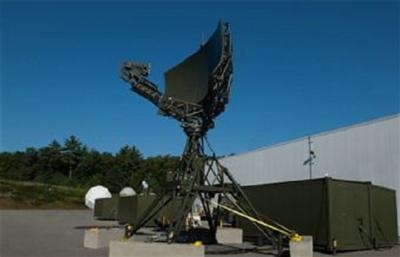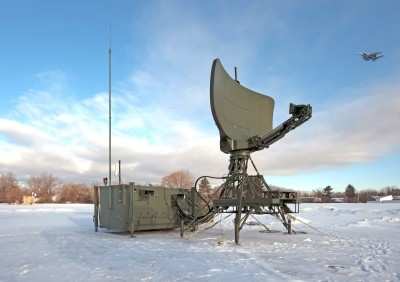Sun, Mar 25, 2012
ECS Project Had Been Threatened By Budget Cuts
A program to provide a new deployable air traffic control system is moving forward again after budgetary challenges. The Deployable Radar Approach Control, or D-RAPCON developed by the Air Force's Electronic Systems Center (ECS) is designed to provide worldwide expeditionary approach and en route surveillance for joint, coalition and civil aircraft to direct and monitor air missions through sequencing, separation of aircraft, navigation assistance and airspace control services.

"At the end of August of last year, we were ready to go, but after a $48 million congressional mark was made against the program's fiscal year 2012 engineering, manufacturing and development budget, we had to regroup," said Capt. Charles O'Connor, program manager.
The program office, working in conjunction with the Air Force Flight Standards Agency (AFFSA), looked at where capabilities could be reduced while maintaining the original concept of operations. The AFFSA has listed D-RAPCON their number one priority for years. "We are looking more to commercial-off-the-shelf, or COTS, type solutions and have reduced the pre-production units from two to one for cost savings," said O'Connor. "We were able to maintain the key performance parameters."
The system will be modular and scalable to be able to be used at forward operating locations, in the event of failed fixed-base systems or in the event of a natural disaster. "D-RAPCON can also be deployed right after a disaster occurs," said Col. Jimmie Schuman, Aerospace Management Systems senior materiel leader. "As we have seen recently with the earthquake in Haiti and previously with Hurricane Katrina, this humanitarian relief aspect will fill a critical need. "

The system will be composed of two subsytems - air surveillance radar and operations - each of which can be separately deployed. D-RAPCON will improve radar accuracy and reliability and be a significant improvement over the legacy systems that are being used today. Maintenance and sustainment issues have become a problem with the current systems as parts become harder to find and it becomes costlier to maintain the system. A draft request for proposal is currently out on FedBizOpps, with the final set to be released at the end of March. An industry day was held March 7 to highlight the adjustments between the previous system requirements document and the current one. "We want to ensure everyone is aware of the changes that were made," said O'Connor. "The industry day was very successful and we received a lot of good feedback."
It will be a full and open competition and best value contract. It is anticipated that the EMD contract will be awarded in the first quarter of FY13 with a value of $50.5 million. The overall program value is estimated at $672.5 million. The Air Force plans to buy 19 D-RAPCON systems. Currently, full operational capability is scheduled for 2020, but, according to O'Connor, if the Air Force can and wants to accelerate, the program is equipped to do so.
More News
A Puff Of Smoke Came Out From The Top Of The Engine Cowling Followed By A Total Loss Of Engine Power On May 9, 2025, about 1020 mountain daylight time, an experimental amateur-buil>[...]
From 2022 (YouTube Edition): Jenny, I’ve Got Your Number... Among the magnificent antique aircraft on display at EAA’s AirVenture 2022 was a 1918 Curtiss Jenny painstak>[...]
Very High Frequency (VHF) The frequency band between 30 and 300 MHz. Portions of this band, 108 to 118 MHz, are used for certain NAVAIDs; 118 to 136 MHz are used for civil air/grou>[...]
“From approximately November 2021 through January 2022, Britton-Harr, acting on behalf of AeroVanti, entered into lease-purchase agreements for five Piaggio-manufactured airc>[...]
From 2008 (YouTube Edition): US Fish and Wildlife Service Chooses The Kodiak To Monitor Waterfowl Populations Waterfowl all over North America may soon have to get used to a new ab>[...]
 NTSB Prelim: Lee Aviation LLC JA30 SuperStol
NTSB Prelim: Lee Aviation LLC JA30 SuperStol Classic Aero-TV: Curtiss Jenny Build Wows AirVenture Crowds
Classic Aero-TV: Curtiss Jenny Build Wows AirVenture Crowds ANN's Daily Aero-Term (05.30.25): Very High Frequency (VHF)
ANN's Daily Aero-Term (05.30.25): Very High Frequency (VHF) Aero-News: Quote of the Day (05.30.25)
Aero-News: Quote of the Day (05.30.25) Classic Aero-TV: Quest Kodiak Enhances Migration Monitoring Programs
Classic Aero-TV: Quest Kodiak Enhances Migration Monitoring Programs




